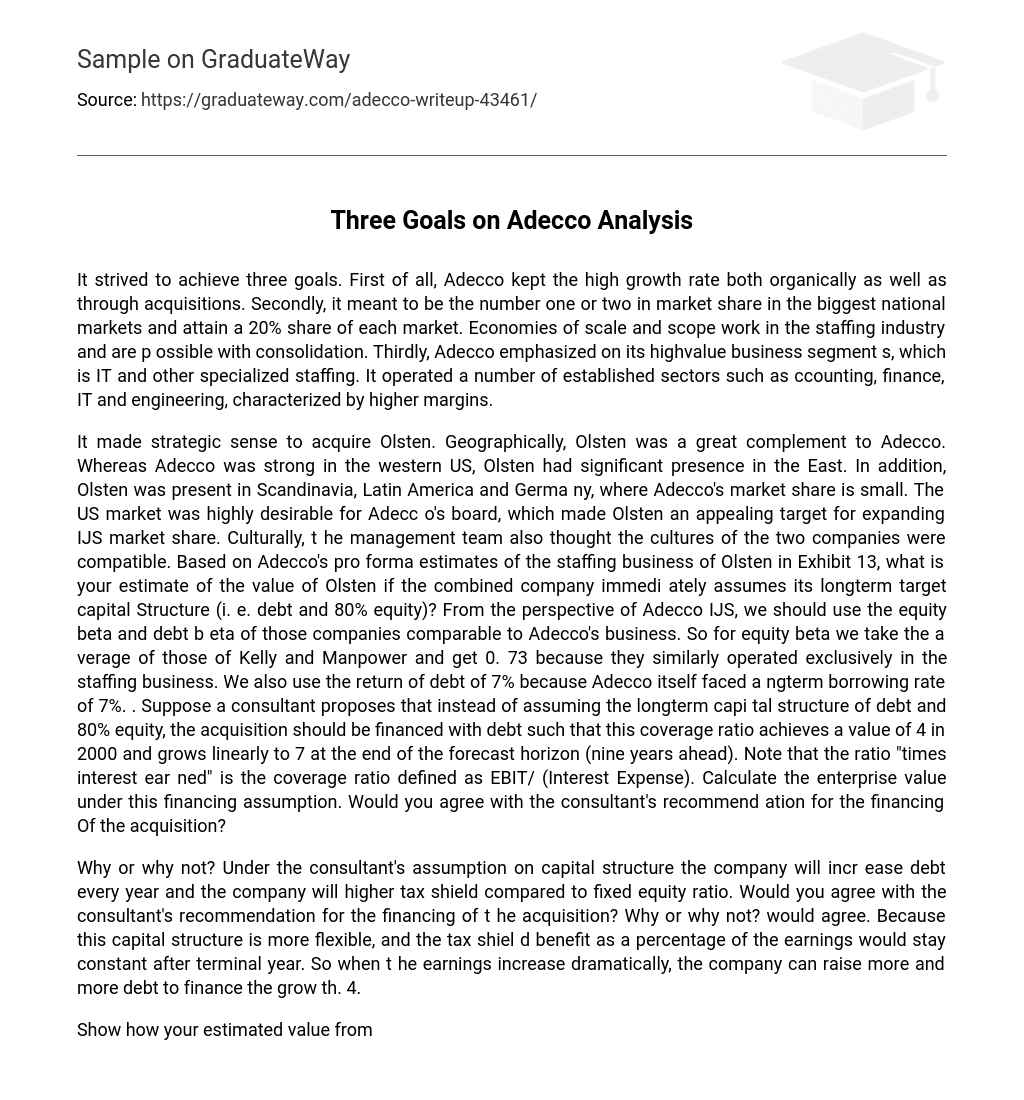Adecco had three main objectives. First, it aimed to achieve growth both organically and through acquisitions. Second, it aimed to be one of the top two players in the largest national markets and secure a 20% market share in each. Consolidation allowed for economies of scale and scope in the staffing industry. Finally, Adecco focused on its high-value business segments, particularly IT and specialized staffing. It also operated in established sectors such as accounting, finance, IT, and engineering, which had higher profit margins.
The strategic decision to acquire Olsten made sense due to its geographic complementarity with Adecco. While Adecco had a strong presence in the western US, Olsten had significant presence in the East, Scandinavia, Latin America, and Germany. It was especially desirable for Adecco to expand its market share in the US. The management team also believed that the cultures of both companies were compatible.
Based on Adecco’s pro forma estimates in Exhibit 13, what is your estimate of Olsten’s value if the combined company immediately adopts its long-term target capital structure, consisting of 80% equity and debt? From Adecco IJS’s perspective, we should use the equity beta and debt beta of companies comparable to Adecco’s business. Therefore, we take the average equity beta of Kelly and Manpower, which is 0.73 since they both exclusively operate in the staffing business. The return on debt is assumed to be 7%, matching Adecco’s long-term borrowing rate.
Alternatively, a consultant proposes financing the acquisition with debt. In this scenario, the coverage ratio would start at a value of 4 in 2000 and increase linearly to 7 at the end of the forecast horizon, nine years ahead.Please calculate the enterprise value using the financing assumption of the “times interest earned” ratio, which is defined as EBIT divided by Interest Expense. Do you agree with the consultant’s recommendation for financing the acquisition?
Why or why not? Under the consultant’s assumption on capital structure, the company will increase debt every year and have a higher tax shield compared to a fixed equity ratio. Do you agree with the consultant’s recommendation for the financing of the acquisition? Why or why not? I agree. This capital structure offers more flexibility, and the tax shield benefit as a percentage of earnings will remain constant after the terminal year. Therefore, when earnings increase significantly, the company can raise more and more debt to finance growth.
In considering two aspects, the estimated value from Question 2 is affected. These aspects include Adecco assuming $750 million of Olsten debt and Adecco US making royalty payments to Adecco SA, which potentially creates tax savings for the worldwide firm. Two adjustments are made to the valuation in Question 2. Firstly, the elimination of Olsten’s long-term debt results in a change in the capital structure, specifically the equity ratio. Secondly, the tax savings resulting from royalty payments are added to the free cash flow.





